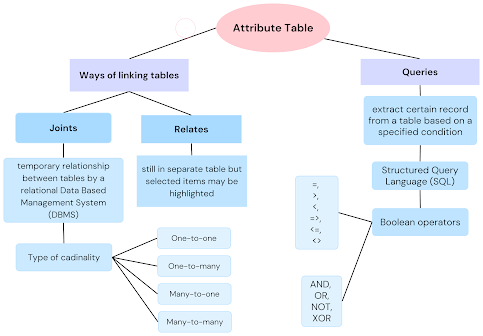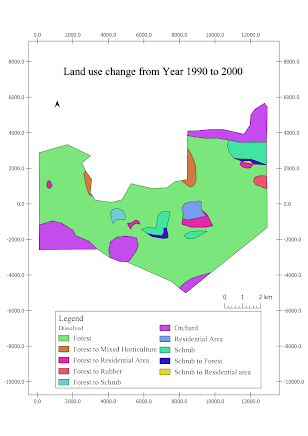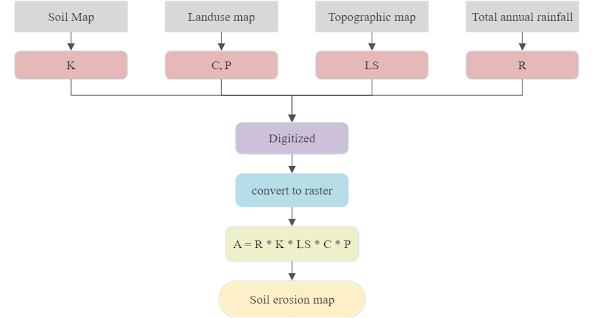Attribute Data Management
Attribute data refers to non-spatial information that provides details about a spatial feature. Spatial data includes both location information and additional attributes accompanied with it.
There are two methods for linking the tables: joining and relating. Joining a table involves establishing a temporary relationship between tables through a relational Data Based Management System (DBMS). The tables need to have a common field and the original stored data remains unaffected. Calculation views can apply a cardinality setting to joins which specifies the number of matching entries in the other tables for each entry in one table. Cardinality types include one-to-one, one-to-many, many-to-one and many-to-many. On the other hand, relating tables are similar to joins but the tables remain separate and selected items in one table may be highlighted in the table.
A query is used to extract specific records from a table based on specified conditions. Many databases utilize a specialized query language known as Structured Query Language (SQL). SQL serves as a standardized interface that employs logical expressions to extract matching records. Boolean (or logical) operators are used to define the conditions in the criteria, which then produce evaluations of True or False. Boolean operators include =, <, <=, >, >=, and <>, while the words AND, OR, NOT, and XOR are used for combining conditions.
A query extracts certain records from a table based on a specified condition. Many databases use a special query language called Structured Query Language (SQL). SQL is a standard interface that uses logical expressions to extract matching records. Boolean (or logical) operators are used to set the conditions of the criteria, from which an evaluation of True and False is derived. Boolean operators includes: =, <, <=, >, => and <>, while for the word: AND, OR, NOT and XOR.
.png)



Comments
Post a Comment